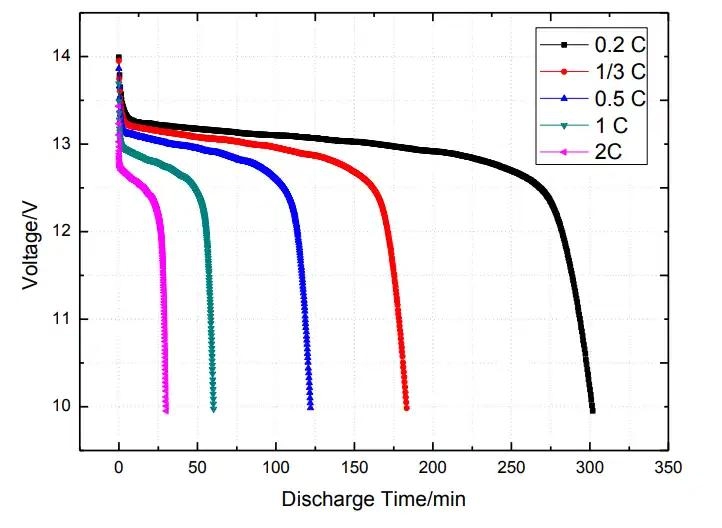Rechargeable batteries have become an integral part of our daily lives, powering everything from smartphones to electric vehicles. A common question is: How long do rechargeable batteries last on a single charge? In this comprehensive guide, we will explore the key factors that influence the lifespan of rechargeable batteries and provide tips for maximizing their performance. Whether you’re looking to understand your smartphone’s battery life or optimize the use of your rechargeable devices, this article will provide you with valuable insights.

Part 1: What are Rechargeable Batteries and Why Do They Matter?
Rechargeable batteries, also known as secondary batteries, are designed to be charged and used multiple times. Unlike disposable batteries that are discarded after a single use, rechargeable batteries are more environmentally friendly and cost-effective in the long run.
These batteries come in different chemical compositions, including Nickel Cadmium (Ni-Cd), Nickel Metal Hydride (Ni-MH), and Lithium-ion (Li-ion). Each type of battery has its unique characteristics and lifespan.
Part 2: Factors Affecting Rechargeable Battery Life
The lifespan of a rechargeable battery per charge varies depending on several factors, such as the battery’s chemical composition, usage patterns, temperature conditions, and charging habits. Understanding these factors can help extend battery life and optimize its performance.
- Battery Chemistry: Different types of rechargeable batteries have varying lifespans. For example, Ni-Cd batteries typically last for 500 to 1000 charge-discharge cycles, while Ni-MH batteries usually last for 300 to 500 cycles.
- Usage Patterns: The frequency and depth of discharge (DoD) significantly impact its lifespan. Shallow discharges, where only a small portion of the battery’s capacity is used, and charging the battery before it’s fully depleted can help prolong its life.
- Temperature: Extreme temperatures—both high and low—can negatively affect the performance and lifespan of rechargeable batteries. It’s important to keep batteries within the manufacturer’s recommended temperature range for optimal performance.
- Overcharging and Over-Discharging: Overcharging or deeply discharging rechargeable batteries can lead to premature failure and reduced overall lifespan. Always avoid these practices to ensure battery longevity.
Part 3: Lifespan of Common Rechargeable Batteries
Let’s take a closer look at some of the most common types of rechargeable batteries and their typical lifespans:
- Nickel Cadmium (Ni-Cd) Batteries: Ni-Cd batteries were once widely used but are now less common due to their lower energy density and environmental concerns. They typically last for 500 to 1000 charge-discharge cycles.
- Nickel Metal Hydride (Ni-MH) Batteries: Ni-MH batteries offer higher energy density and are considered more environmentally friendly than Ni-Cd batteries. These batteries can last for approximately 300 to 500 cycles.
- Lithium-ion (Li-ion) Batteries: Li-ion batteries have revolutionized the rechargeable battery market. With higher energy density, lower self-discharge rates, and longer lifespans, they can typically last for 500 to 1000 cycles or even more, depending on usage and maintenance.
Part 4: Estimating Battery Life for Different Devices
Battery life varies depending on the type of device and its power requirements. Here are some general estimates for the battery life of commonly used devices:
- Smartphones: Smartphone battery life can vary significantly, typically ranging from a few hours to a full day, depending on the device’s battery capacity, usage patterns, and settings.
- Laptops: Laptop battery life depends on factors such as screen brightness, CPU usage, and battery capacity. Most laptops can last from a couple to several hours on a single charge.
- Electric Vehicles (EV): For electric vehicles, battery life is typically measured in terms of driving range. Modern EVs can travel approximately 200-300 miles (320-480 kilometers) on average on a single charge. However, the actual range may vary depending on driving conditions and the specific vehicle’s battery.
By understanding the factors that influence battery life, you can take steps to optimize your rechargeable devices and ensure they last longer, reducing the need for frequent replacements and promoting a more sustainable future. For more information on maintaining lithium batteries, you can check out our Maintenance Guide for Electric Vehicle Lithium Batteries.
Part 5: Rechargeable Battery Charging Guide (Including Smart and Fast Charging Tips)
Choosing the Right Charger
Select a charger specifically designed for your rechargeable battery type and size. Using an incompatible charger can lead to overcharging or undercharging, which can damage your batteries over time.
Checking Battery Compatibility
Before placing batteries in the charger, ensure they meet the charger’s specifications. Using incompatible batteries can cause charging issues or even damage the charger.
Inserting Batteries Correctly
Always pay attention to the polarity markings on both the batteries and the charger. Align the positive (+) and negative (-) terminals correctly to avoid short circuits and ensure safe and effective charging.
Connecting the Charger to Power
After inserting the batteries, plug the charger into a reliable power source. Ensure the power supply is stable to prevent any interruptions during the charging process.
Monitoring Charging Progress
Most chargers are equipped with indicator lights to show the charging status. Keep a close eye on these indicators to track the progress. Once the batteries are fully charged, avoid leaving them in the charger to prevent overcharging.
Unplugging the Charger After Charging
Once the batteries are fully charged, unplug the charger from the power source. This helps conserve energy and eliminates any potential fire hazards.
Regularly Inspecting Batteries and Charger
Periodically inspect your batteries and charger for any signs of wear and tear or damage. Replace any faulty components immediately to ensure safe and efficient charging.
Smart Charging Technology
Smart charging systems have become increasingly popular for their ability to ensure optimal charging cycles. These systems adjust the charging rate based on the battery’s condition, helping to prevent overcharging, minimize heat buildup, and prolong battery life. Look for chargers with smart charging management features to help extend battery lifespan.
Fast Charging
Widely used in modern devices, fast charging technology allows batteries to charge quickly without damaging them. However, it’s important to note that frequent fast charging can lead to increased heat generation, which may degrade battery life. For everyday use, it is advisable to use standard charging speeds to maintain battery health.
Wireless Charging
Wireless charging offers the convenience of charging devices without the need for physical cables. However, it’s important to ensure that the charger is compatible with your device’s battery type to prevent inefficiency or overheating. While wireless charging may be slower than wired charging, it is a convenient option for everyday use if convenience is a priority.
Part 6: How to Extend the Life of Rechargeable Batteries?
Avoiding Overcharging
Overcharging can cause heat buildup and shorten the battery’s lifespan. Remove the battery from the charger once it’s fully charged.
Using the Right Charger
Always use a charger that is compatible with your rechargeable batteries. Incompatible chargers can lead to improper charging and damage your batteries.
Charging at Room Temperature
Charge your batteries at room temperature to ensure optimal charging conditions.
Storing Batteries Properly
When not in use, store rechargeable batteries in a cool, dry place away from direct sunlight and moisture. Avoid storing them in hot environments, as excessive heat can cause battery degradation.
Avoiding Deep Discharges
Try to avoid fully depleting rechargeable batteries before charging them. Deep discharges can significantly shorten battery life, so it’s best to recharge them before they are fully discharged.

Tips to Extend the Life of Rechargeable Batteries
Rechargeable batteries are a convenient and environmentally friendly power source, but their lifespan can be affected by how you use and care for them. To help you maximize the lifespan of your rechargeable batteries, here are some practical tips to extend their lifespan:
1. Minimize Full Discharges
While it may be tempting to let your rechargeable batteries drain completely, doing so can put unnecessary stress on the battery and shorten its lifespan. Instead, charge your batteries when they reach a low charge level to avoid shortening their lifespan.
2. Cycle Your Batteries Regularly
Cycling refers to the process of periodically fully discharging and then fully charging rechargeable batteries. This helps maintain the battery’s capacity and performance. Regular cycling can prevent the buildup of battery memory effect. This helps maintain battery efficiency over time.
3. Replace Old Batteries Promptly
Rechargeable batteries degrade over time and with use. When your batteries start to lose their ability to hold a charge or show a noticeable decline in performance, it is time for replacement. New batteries will typically offer better performance and reliability.
4. Extend Lithium-Ion Battery Life
For more tips on how to extend the life of lithium-ion batteries, check out our detailed guide. These batteries are commonly used in high-performance devices, and proper care can help them last longer for optimal performance.
Battery Bank (Battery Array) vs. Single Battery: Choosing the Best Option for Your Energy Needs
When deciding between using a battery bank or a single battery, it’s important to understand how each option works, their respective advantages, and which choice best meets your energy needs in terms of performance and cost.
What is a Battery Array?
A battery array refers to a collection of batteries connected together to provide a stable and reliable power source. In this article, we will explore the different types of battery arrays, their advantages, and the key areas where they excel. If you are interested in learning more about the best batteries for solar off-grid systems, be sure to check out our detailed guide on choosing the right batteries for solar off-grid systems.







